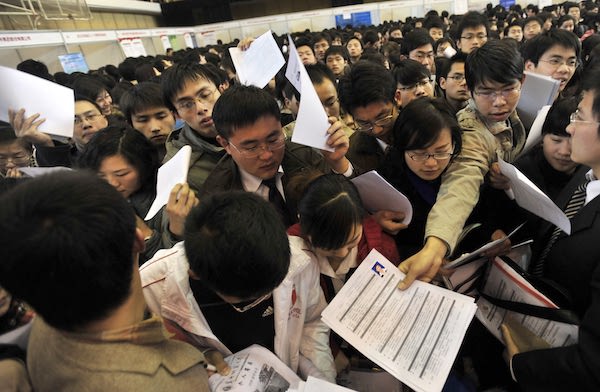China’s zero-covid policy resulted in a significant hit to the Chinese economy, which also lead to an increase in youth unemployment.

Recently Columbia University Professor Adam Tooze referred to unemployment among Chinese youth and tweeted “Chinese youth unemployment continues to rise to ever more alarming levels.” This led to a huge debate on the true nature of the Chinese economy and the levels of unemployment prevalent across the country.
China considered the second largest economy in the world just after the US, and which has a huge military force, has been facing a wave of youth unemployment. With the academic study of the Chinese youth not complementing their work, the unemployment scenario is only set to rise. The misalignment between the jobs that young people are studying for and the positions that are available in the big firms is said to be a major cause of unemployment among the youth in China.
Data shows that joblessness in China prevails primarily among the ages of 16–24 years, even as the overall urban unemployment rate is revamping. Besides, the Central Bank of China has raised its medium-term lending facility rate, a one-year rate that happens to influence the banks’ funding costs, from 2.75 per cent to 2.65 per cent.
Given the turmoil China’s economy has experienced in the aftermath of the COVID-19 pandemic, youth unemployment undoubtedly stands high. As per the statistics available, youth unemployment has hit 20.8 per cent, the highest since 2018. Economists have urged the government to provide sufficient jobs for the youth of China in order to recover from the faltering economy.
Faltering Economy
On June 15, 2023, a rating notch came after the central bank passed this week, which out of the blue lowered the seven-day reverse repo rate, a crucial measure for short-term banking sector liquidity, and authorities unveiled tax breaks for businesses and ventures. Economists opine that in the upcoming months, Chinese policymakers take a series of measures including infrastructure funding to provide aid for the local governments, which consists of the costs of many of China’s three-year zero-covid apparatus and depends largely on property development for revenue.
The data published by the National Bureau of Statistics of China on Thursday fortified discouraging comments about the Chinese growth aspects. The government is forced to revise its full-year target of a 5 per cent expansion in manufacturing, which has already hit rock bottom, the worst in decades. The government has also revised the retail and industrial production targets to 12.7 per cent and 3.5 per cent from the earlier targets of 18.4 per cent and 5.6 per cent set in May.
The data by NBS has also claimed that China’s vast property sector is still suffering. Further, China’s statistical bureau said the desired growth in the second quarter would be “assumingly faster,” but it also has repercussions, as the “international environment” happens to be complex and dangerous, and the fundamentals for the economic revival are not yet well-grounded. The revival is assumed to slow further in June and July as conducive effects wash off from last year’s lockdowns in several cities.
In conclusion, the required measures to revive the economy can be expected in the upcoming months, specifically on the fiscal and housing fronts, to encounter the tenacious hurdles in the economy and also to generate employment across all ages.
References:
- Chinese economic data fuels gloom over recovery (Financial Times)
- Michelle Toh, “China cuts rates again as youth unemployment hits new record high” (CNN Business)
- China cuts rates again as youth unemployment hits new record high (Goldman Sachs)
